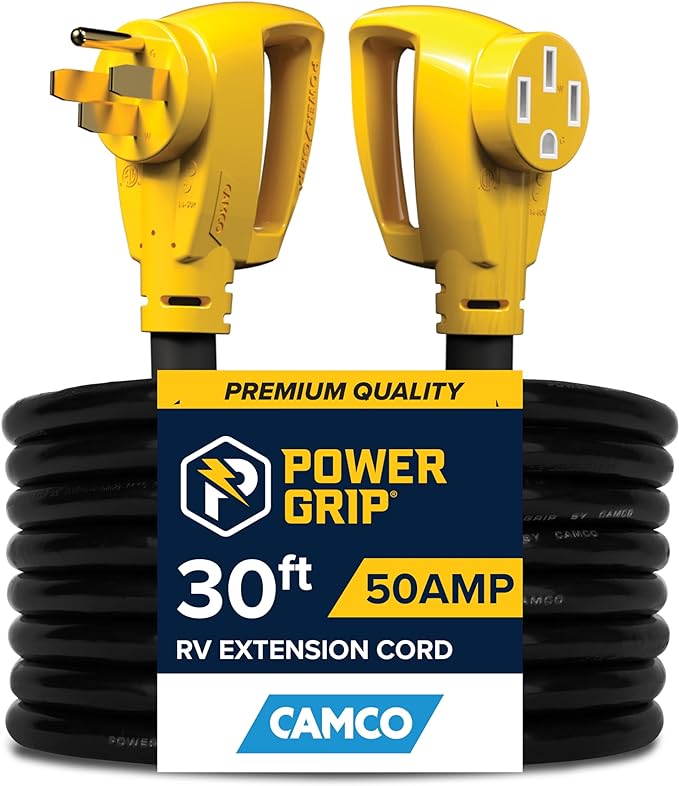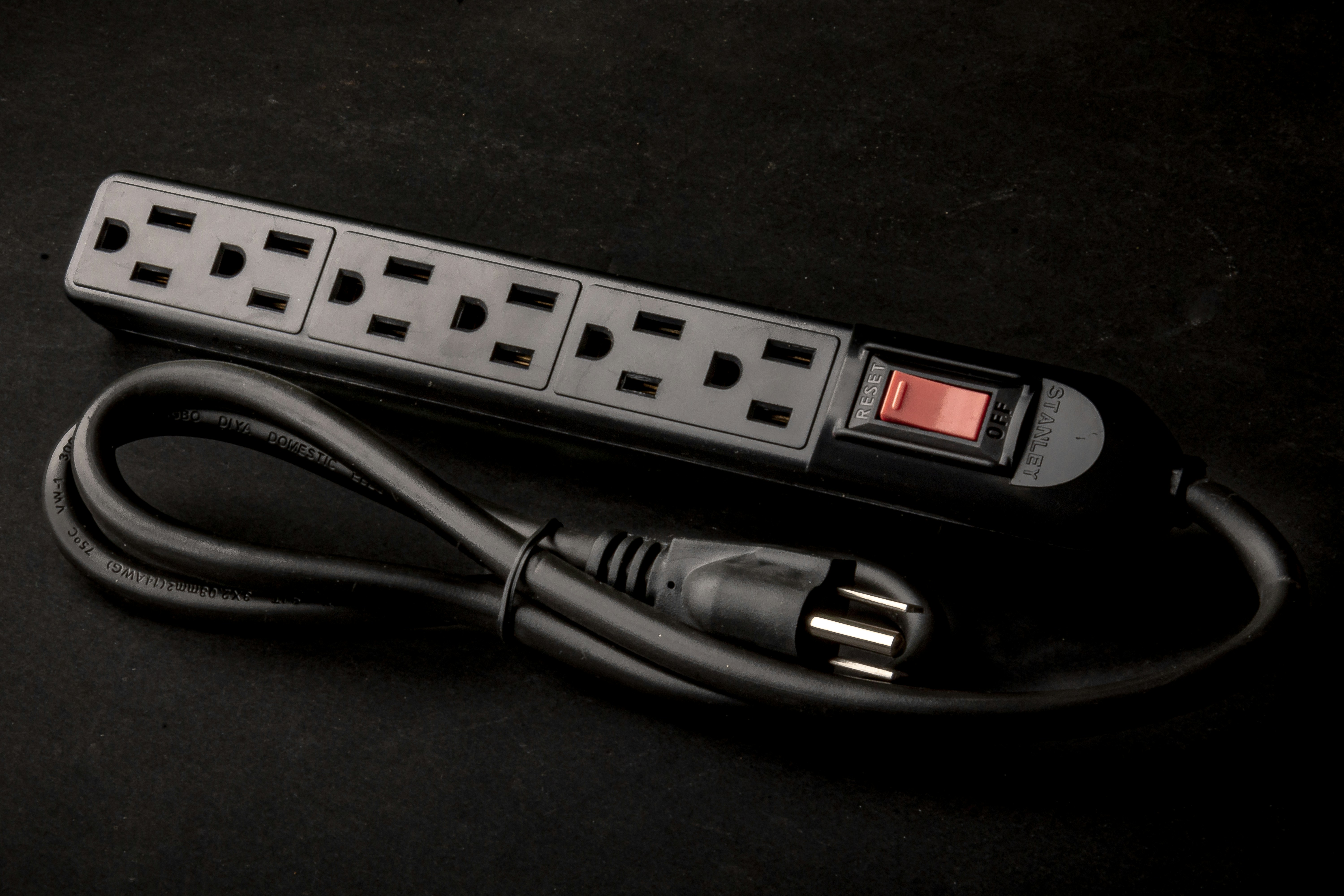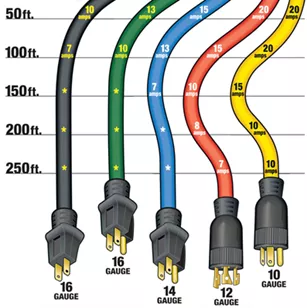Choosing the right extension cord might seem simple, but it can make a big difference for your safety and convenience. Have you ever plugged in a device, only to find the cord too short or the power flickering?
That frustration can be avoided. You’ll discover easy tips to pick the perfect extension cord for your needs. By the end, you’ll feel confident knowing your devices are powered safely and efficiently. Keep reading to learn what really matters when choosing an extension cord.

Credit: www.happycampers.store
Cord Length And Thickness
Choosing the right extension cord is important for safety and performance. Two key factors to consider are cord length and thickness.
The right length and thickness help your tools work well without overheating or losing power.
Matching Cord Length To Task
Pick a cord that is long enough to reach your tool and the power outlet. Avoid using cords that are too short or too long.
Using a cord that is too short can cause strain on the connection. Too long cords can reduce power and create tripping hazards.
- Measure the distance from the outlet to your tool before buying
- Choose a cord slightly longer than the needed length
- Do not coil extra length tightly while in use
Understanding Wire Gauge
Wire gauge shows the thickness of the cord’s wires. Lower gauge numbers mean thicker wires.
Thicker wires carry more electricity safely. Thinner wires can overheat if too much power flows through.
| Wire Gauge (AWG) | Best For |
|---|---|
| 16 gauge | Light tools and small appliances |
| 14 gauge | Medium power tools and outdoor use |
| 12 gauge | Heavy-duty tools and high power devices |
)
Credit: www.simoncaddyelectrical.com.au
Power Requirements
Choosing the right extension cord depends on the power needs of your devices. Using the wrong cord can cause damage or safety risks.
It is important to understand how much power your tools or appliances require. This helps you pick a cord that can handle the load safely.
Calculating Wattage
First, find the wattage of the device you want to power. Wattage tells you how much energy the device uses.
You can usually find the wattage on the device’s label or in its manual. If only volts and amps are listed, multiply them to get watts.
- Wattage = Volts × Amps
- Example: 120 volts × 5 amps = 600 watts
- Sum wattage for multiple devices to get total power needed
Choosing The Right Amperage
Amperage is the current the cord can safely carry. Pick a cord with an amp rating higher than your device’s current.
Using a cord with too low amperage can cause overheating and fires. Check the cord’s label for its amp rating.
- Match cord amps to or above device amps
- For 600 watts at 120 volts, amps = 5
- Choose cord rated for at least 5 amps or more
- Longer cords may need higher amp ratings
Indoor Vs Outdoor Use
Choosing the right extension cord is important for safety and performance. Indoor and outdoor cords are made differently to handle specific conditions.
Knowing the difference helps you pick a cord that lasts and works well where you need it.
Weather Resistance Features
Outdoor extension cords must resist water, sun, and cold weather. They have special coatings to protect against rain and moisture.
Indoor cords do not have these protections. Using an indoor cord outside can cause electrical hazards and damage.
- Outdoor cords have waterproof jackets
- They resist UV rays from the sun
- They stay flexible in cold temperatures
Durability And Material
Outdoor cords use thick, heavy-duty materials to handle rough use and weather. The insulation is strong and tough.
Indoor cords have thinner insulation and lighter materials. They work well inside but can wear out fast outside.
- Outdoor cords use rubber or plastic with thick insulation
- Indoor cords often have softer, thinner plastic coating
- Durability affects how long the cord lasts in its environment
Safety Features
Choosing the right extension cord is important for safety. Using the wrong cord can cause fires or shocks.
Look for cords with safety features to protect your home and devices. These features keep electricity controlled.
Grounded Vs Non-grounded Cords
Grounded cords have three prongs and a safety wire. This wire helps prevent electric shocks.
Non-grounded cords have only two prongs. They do not protect against electrical faults as well as grounded cords.
- Use grounded cords for heavy or metal appliances
- Non-grounded cords are okay for small devices
- Always check your device’s needs before choosing
Surge Protection Options
Surge protectors stop sudden voltage spikes. These spikes can damage your electronics or cause fires.
Some extension cords come with built-in surge protection. This adds a layer of safety for your devices.
- Look for cords labeled with surge protection
- Check the joule rating to know protection strength
- Replace surge cords after a big power surge
Connector Types
Choosing the right extension cord means knowing about connector types. Connectors link the cord to power sources and devices.
Different connectors fit different plugs and sockets. Knowing their types helps you pick the correct cord.
Plug And Socket Compatibility
Plugs and sockets come in many shapes and sizes. They must match for the extension cord to work safely.
Check the plug type on your device. Then find an extension cord with a socket that fits it well.
- Standard two-prong plugs fit most indoor devices
- Three-prong plugs add a grounding pin for safety
- Some plugs have polarized blades to fit only one way
- Outdoor plugs often have weatherproof covers
Specialized Connectors
Some devices need special connectors for power. These may include locking or heavy-duty types.
Specialized connectors ensure a secure connection. They prevent accidental unplugging and handle higher power loads.
- Locking connectors twist to lock in place
- Heavy-duty connectors handle more current safely
- Flat connectors fit tight spaces behind furniture
- Water-resistant connectors protect outdoor use
Certifications And Standards
Choosing the right extension cord means checking its safety certifications. These certifications show the cord meets important rules. They help keep you safe from electrical hazards.
Standards also guide the quality and performance of extension cords. Knowing which certifications to look for makes buying easier and safer.
Recognizing Safety Labels
Safety labels on extension cords tell you if the product passed tests. Look for marks from trusted organizations. These labels confirm the cord is safe to use.
- UL (Underwriters Laboratories) mark shows tested safety
- ETL (Intertek) label means it meets North American standards
- CSA (Canadian Standards Association) mark is for Canadian approval
- CE (Conformité Européenne) mark means it meets European rules
- Look for the voltage and amperage rating on the label
Compliance With Regulations
Extension cords must follow electrical safety rules set by governments. These rules protect users from shocks and fires. Check that the cord complies with local laws.
Using cords without proper approval can cause hazards and legal issues. Always buy cords that meet the required regulations in your area.
Proper Cord Maintenance
Extension cords need care to work safely and last long. Regular maintenance stops accidents and saves money.
Simple steps keep cords in good shape and ready to use anytime.
Storage Tips
Store extension cords in a dry, cool place away from sunlight. This prevents damage and keeps cords flexible.
Wrap cords loosely to avoid kinks and breaks. Use a hook or reel to keep them organized and untangled.
- Avoid sharp bends or tight loops
- Keep cords off the ground to prevent dirt build-up
- Use cord organizers or ties for neat storage
Inspecting For Damage
Check cords regularly for cuts, cracks, or frayed wires. Damaged cords can cause shocks or fires.
Look at plugs and connectors for signs of wear. Replace cords that show any damage to stay safe.
- Look for exposed wires or broken insulation
- Check if plugs are loose or bent
- Test cords before use to ensure proper function

Credit: www.criticalhit.net
Frequently Asked Questions
What Length Extension Cord Should I Choose?
Choose an extension cord length that matches your distance needs. Avoid cords that are too long to prevent voltage drop and safety risks.
How Do I Know The Right Gauge For Extension Cords?
Select the gauge based on your device’s power needs. Lower gauge numbers mean thicker wires and higher power capacity.
Can I Use Outdoor Extension Cords Indoors?
Outdoor extension cords have durable insulation and can be used indoors safely. However, indoor cords may not withstand outdoor conditions.
What Safety Features Should I Look For In Extension Cords?
Look for cords with grounded plugs, insulated handles, and UL or ETL certification for safety and reliability.
Conclusion
Choosing the right extension cord is crucial for safety. It ensures your devices work well. Always check the cord’s length and thickness. Match it with your needs. Look at the power capacity too. This prevents overheating. Consider the environment where you’ll use it.
Indoor and outdoor cords differ. Read labels and instructions carefully. This helps avoid mistakes. A good extension cord lasts long. It provides reliable power. Stay informed and make smart choices. Your safety depends on it. Happy selecting!
8 min read

